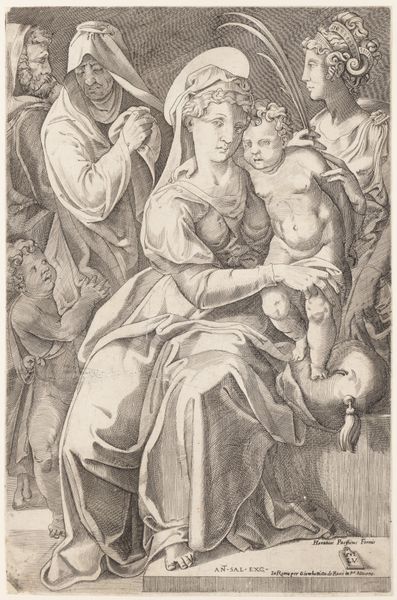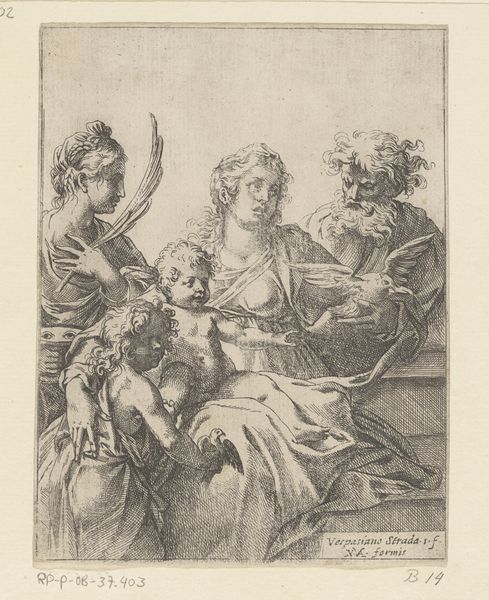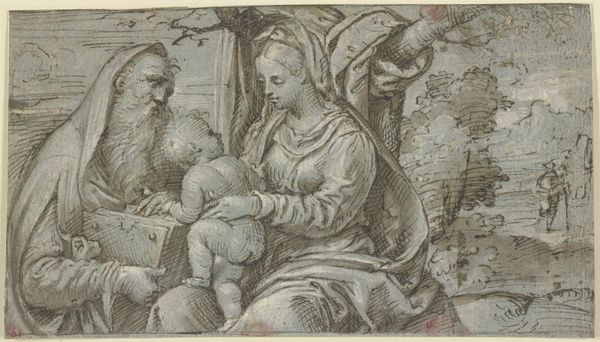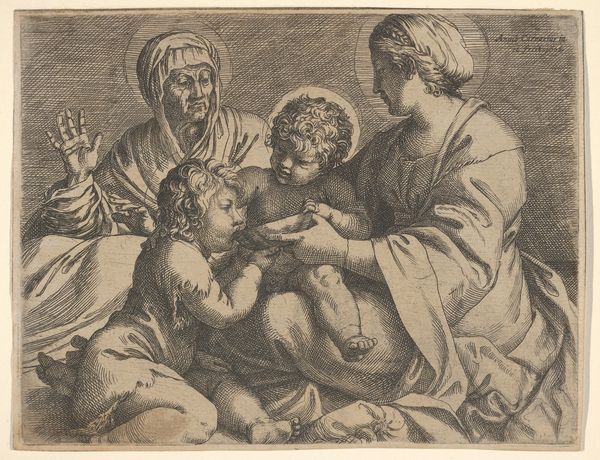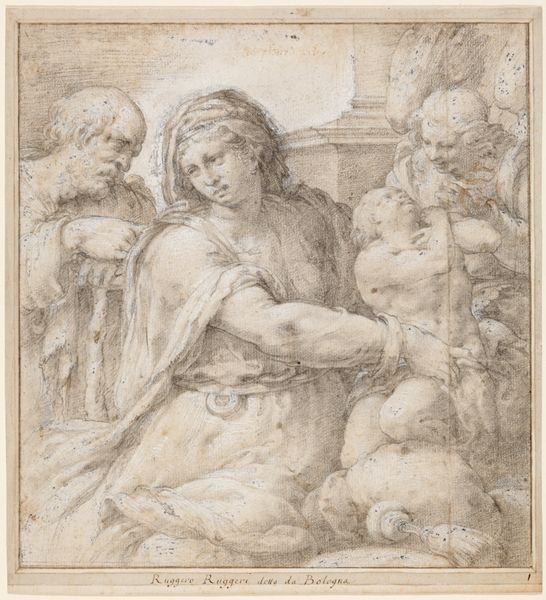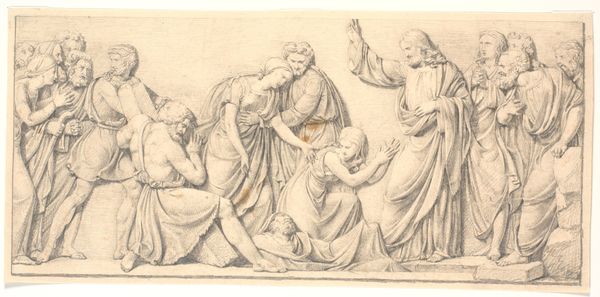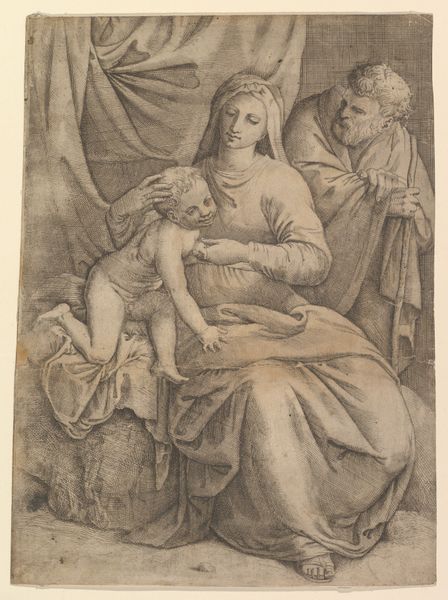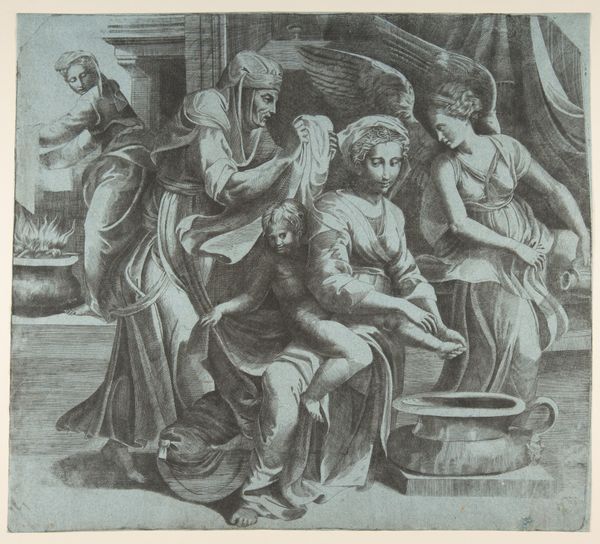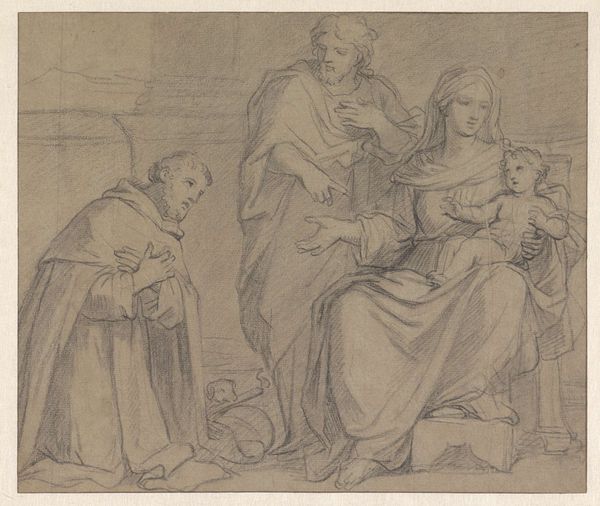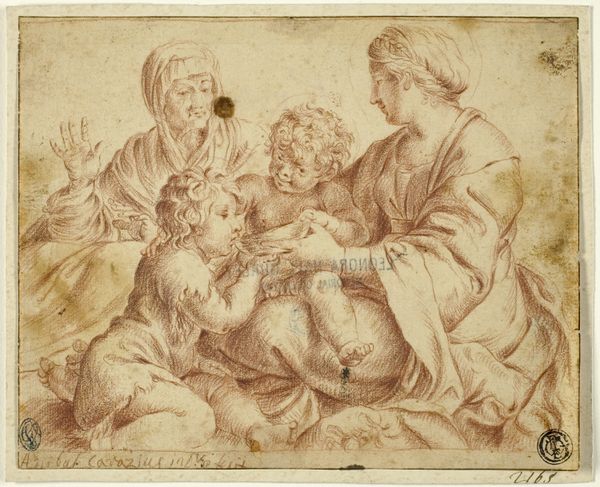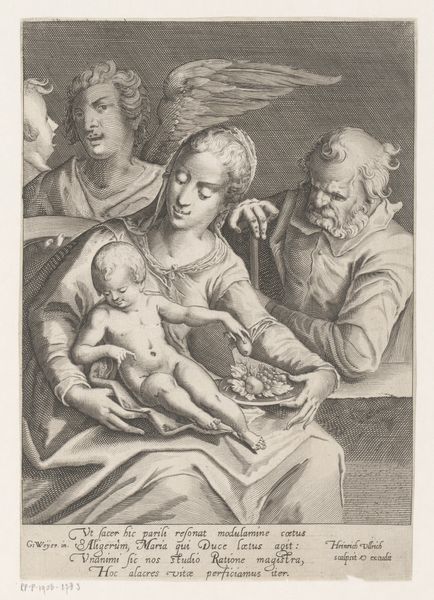
Maria mit dem Jesuskind zwischen Joseph und der Heiligen Katharina
0:00
0:00
drawing, ink, pencil, chalk
#
portrait
#
drawing
#
venetian-painting
#
charcoal drawing
#
figuration
#
oil painting
#
ink
#
pencil drawing
#
pencil
#
13_16th-century
#
chalk
#
italian-renaissance
Copyright: Public Domain
Curator: We’re looking at “Maria mit dem Jesuskind zwischen Joseph und der Heiligen Katharina” a piece attributed to Paolo Veronese that currently resides here at the Städel Museum. Editor: It's instantly captivating, isn't it? The monochromatic rendering lends a serene quality, almost as if we are witnessing a faded memory. There's such softness in the shading and forms; what do you find especially noteworthy about its composition? Curator: I'm struck by the conscious positioning of these holy figures within a decidedly earthly, even secular visual framework. Notice, for instance, how Joseph is absorbed in his reading. It’s the subtle infusion of daily life into the divine narrative that feels distinctly Veronese. The work exemplifies a larger trend of the 16th century wherein Venetian art humanized biblical scenes. Editor: Absolutely, that embedded worldliness is clear, yet it is not distracting. Look closely; what does it reveal about gendered power dynamics during the Renaissance, the maternal Madonna being central while the older male figure retreats into textual study. Also, is it just me, or is St. Catherine given a subtly marginalized position in the composition. Why do you suppose she is almost out of the frame? Curator: That’s a crucial reading. It's relevant to remember how female figures of sanctity often acted as allegories for piety and obedience, particularly within the Church's institutional structures. Her positioning could either serve to highlight Mary as central within that construction, or your claim, reveal gender biases. Editor: Precisely. Moreover, viewing the drawing through the lens of modern-day ethical debates, one is prompted to think more critically. The idealization of motherhood, here symbolized by the Madonna and child, begs us to unpack associated social expectations levied upon women even today. What messages about gender roles is the work unintentionally sending out, after all? Curator: By incorporating these theoretical analyses, we enable deeper scrutiny and discussion about how such traditional images wield sustained socio-political force. This Venetian drawing provides insight to those continuing roles from centuries past, prompting examination into our contemporary assumptions and lived experience. Editor: I agree; what began as quiet reverence now reveals an intense landscape of ongoing socio-political dialogue, illuminating and agitating in equal measure.
Comments
No comments
Be the first to comment and join the conversation on the ultimate creative platform.
